✕
Armstrong recently contributed to a historically important HVAC retrofit when the historic Cook Country hospital in Chicago, Illinois (the site of the first hospital blood bank, to name just one of its notable achievements) was converted into two hotels: a Hyatt Place and Hyatt House. The project was launched in 2018 and completed in 2020, and now serves as temporary residences for medical staff working at the nearby healthcare complex, as well as for patients’ visiting families — and then some.
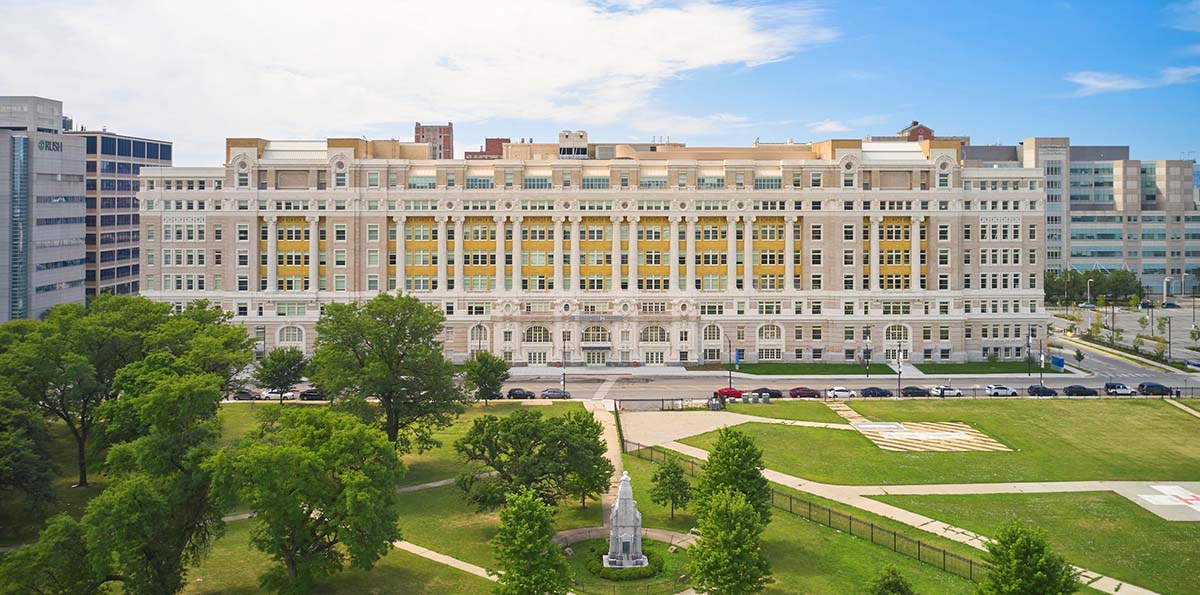
Hyatt Place and Hyatt House. (Courtesy of Armstrong)
The original design of the hotel — first opened in the 1800s and rebuilt in 1914 — could not meet the demands of a modern healthcare facility. (Nor could it have even been walked through since its closing in 2002 without stumbling over collapsed ceilings or curled lead paint.) Basically, it was ready to be demolished. No one wanted to touch it. One reason why: It had no cooling system. No design that would even accommodate one. All the renovations that would have been needed to make the healthcare facility functional as a modern-day hospital, made that prospect unaffordable and unattainable. So the Cook County hospital closed and sat vacant for 20 years.
REDUCE, REUSE, RESTORE: Historic Old Cook County Hospital was restored with HVAC systems that not only keep current resident comfortable, but saves energy, too.
– Mike Moxon
vice president, engineering
Maddock
Restoration
This didn’t sit right with some people. At one point, Cook County hospital was once a leading healthcare institution, and patients from around the world would travel to the facility to receive the innovative treatments and advanced care available from the many healthcare professionals/innovators who served at the institution — not to mention that many of the people who currently reside in Chicago were also born there.
Eventually, rather than demolishing it and starting anew, it was restored by building professionals who saw the history for what it’s worth … to put it simply: more than a Kodak moment. However, the $18 million dollar restoration project posed unique challenges, especially in regard to the HVAC retrofit it required to make the building comfortably occupiable.
The biggest challenge came from the building’s historical aspect. There were specific features the builders wanted to restore (because why invest in a restoration project of this size if that isn’t an intention), and others they had to.
“Trying to install air conditioning into a space that wasn’t designed with air conditioning in mind can be difficult,” said Mike Moxon, vice president of engineering with Maddock, Armstrong Fluid Technology’s Chicago Representative. “There wasn’t even any sort of ductwork, so we had to develop a system where you could get heat and cooling into the space, without taking away from the available space.”
They had to think outside of the box to find their solution: pumps. But not just any kind of pumps — Vertical In-Line Pumps.
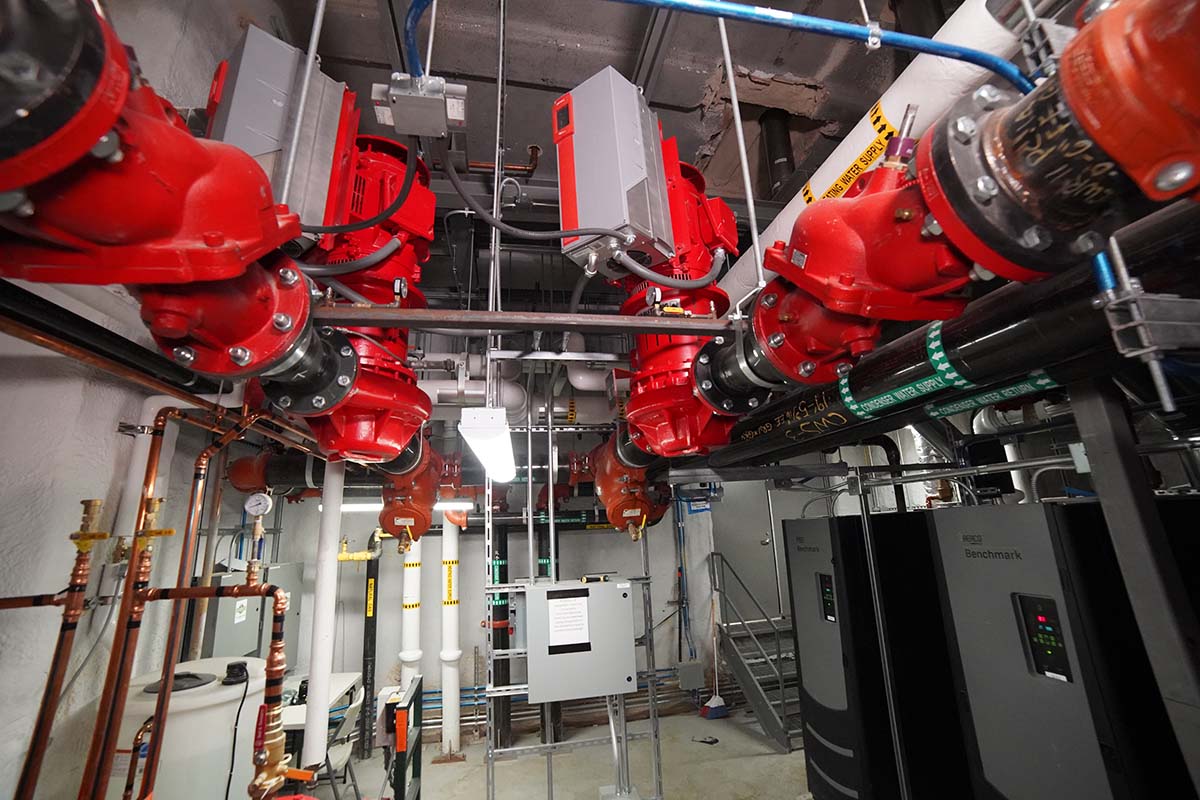
LOOK UP: Vertical In-Line pumps are pipe-mounted, so they can be installed overhead (zero floor space required). (Courtesy of Armstrong)
“Everything was able to be off the ground,” Moxon said. “We had to put pumps up in the air because it was just such a small space to work with.”
This led to the decision to use in-line heat pumps for space savings and controllability. During construction, builders couldn’t just open up the walls because they had no idea what was behind the walls — there was no “as built” drawing.
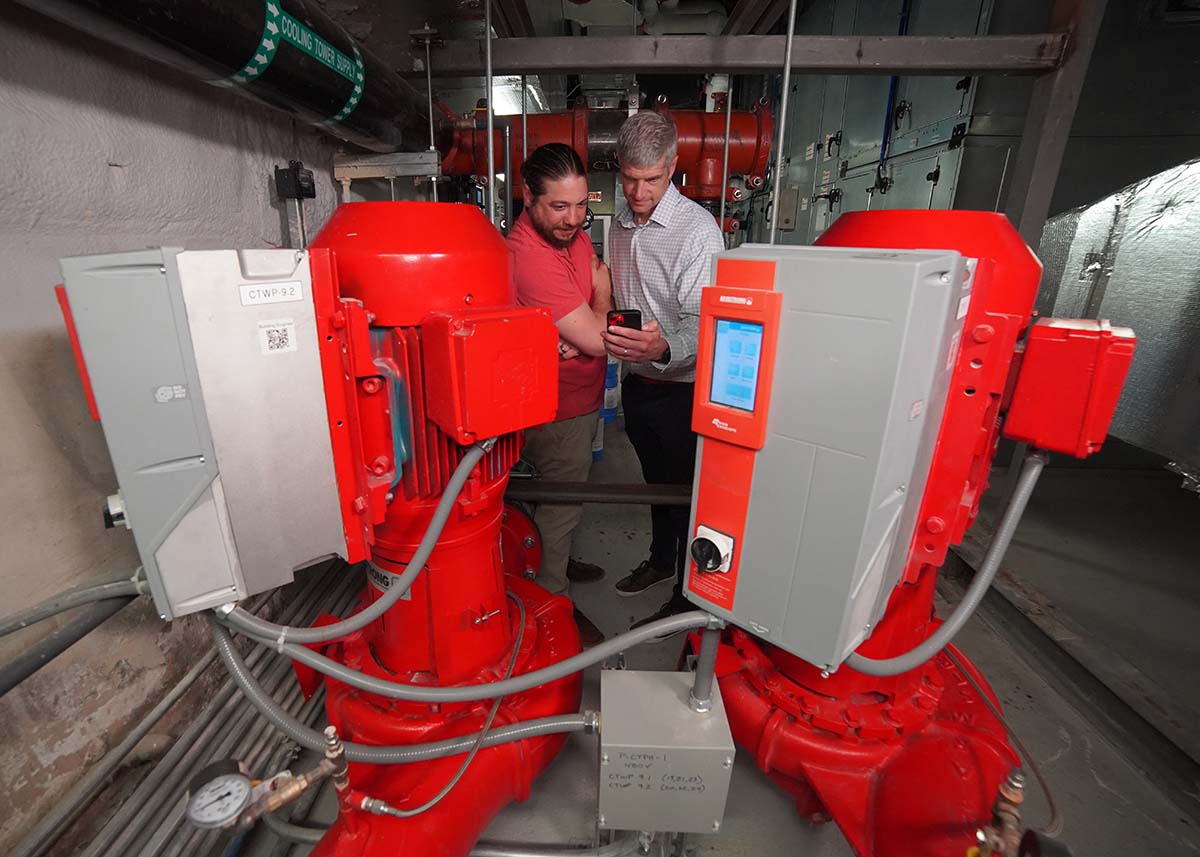
PIPE-MOUNTED: If the pipe-mounted installation makes the pump screens difficult to see, pumps with integrated, intelligent controls can be managed via an app on a smart device. Demonstrated here by Mike Moxon, vice president of engineering, Maddock Industries, and Sean Murphy, Chief Engineer, Hyatt Place and Hyatt Hotels, Chicago. (Courtesy of Armstrong)
Once the contractors assigned the task saw the circumstances presented (specifically, the limited space), it made sense to go with Armstrong Design Envelope 4300 Vertical In-Line pumps, being as the pumps are pipe-mounted and feature intelligent controls for both space-saving and energy efficiency.
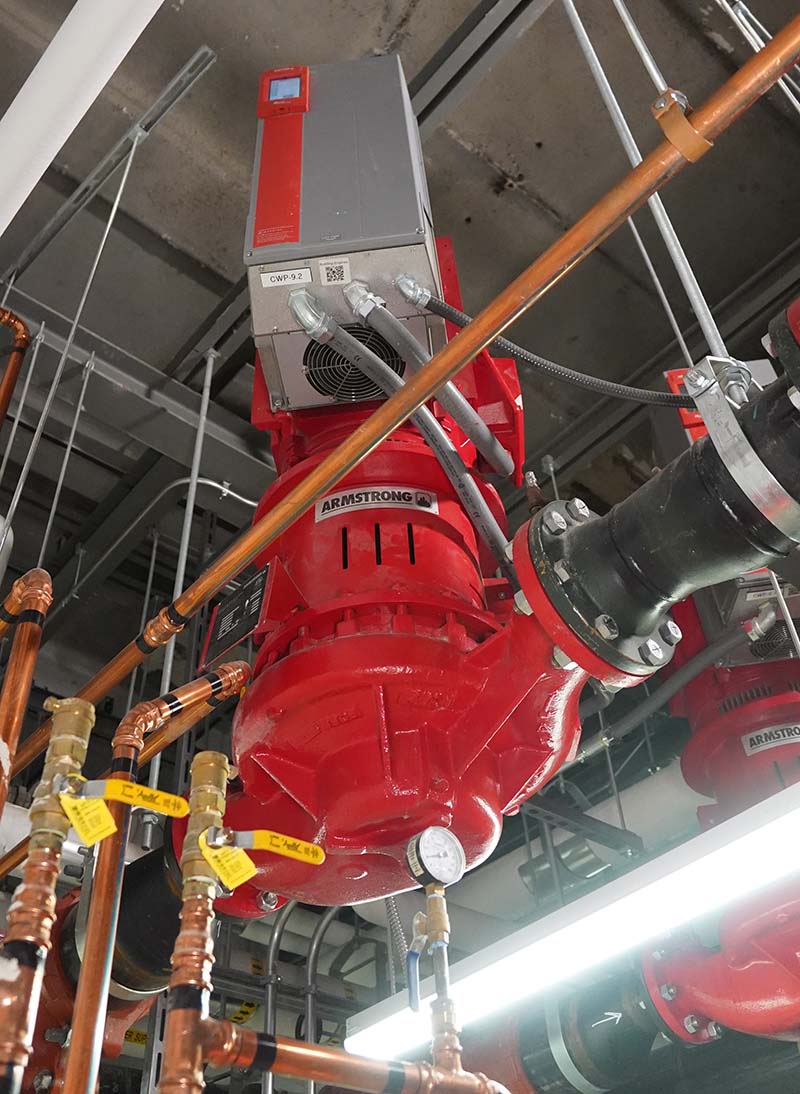
SAVING SPACE: Space-saving Vertical In-Line pumps are mounted in the piping and don’t require concrete bases. (Courtesy of Armstrong)
“It was kind of like Tetris … people were looking at all kinds of different things, and the vertical in-line configuration was the most economical and easiest to install,” Moxon said. “Plus, we didn’t have to worry about the weight. It’s considerably lighter than using a base-mounted [pump], since you don’t have to worry about the inertia bases or the concrete bases. Overall, it just made it cleaner, easier, and safer — you’d think the floor could support the equipment in buildings this age, but you just really didn’t know for sure — there were a lot of unknowns.”
The majority of the newly installed HVAC components are held within just one room on the top floor of the building, with the exception of the cooling tower on the roof, the heat pumps found inside of each room at the hotel, and the booster pumps in the basement that aid domestic water pressure.
“It’s similar to how we do a lot of high-rise residential apartments in the city of Chicago,” Moxon said.
To the uninformed, the design/installation of the HVAC system almost looks like it’s supported by the ceiling Yet, it’s actually supported by truss structures that support the HVAC equipment from the supporting pipes in the ground.
Since there was no equipment in the building before the restoration began, all of that equipment had to be brought and then installed into the building. (There was, however, a central plant in which the steam tunnels provided the building with natural heat, but prior to the restoration, the building didn’t actually provide anything in terms of HVAC. The steam from that central steam plant moved throughout the original piping in order to provide some sort of heating/cooling.)
Now, in addition to the boiler room, there’s a (tight) space — one that couldn’t have been turned into an occupiable room anyways — chock-full of HVAC systems that effectively and comfortably provide heating and cooling to its patrons.
In a perfect world, according to Moxon, there’d be about another 5-10 feet of width to the room to work with.
“Since there wasn’t, we needed a place for the make-up air units to provide fresh air into the corridors as well, and flip-flopping the make-up air unit with the boilers just wouldn’t work,” Moxon said. “With limited space, eventually in order to get to one side of the room to the other, a literal bridge has to be installed to get back and forth.”
In the end, all of the challenges were worth it. Now the former Cook County Hospital still has a place in Chicago with a lot of its original features still intact. For example, in a number of spots in the hotel, original flooring is still walked upon in wide, hospital-designed hallways. Rooms that were once designed for surgery (and more specifically, designed for the observation of said surgery) maintain that original design but now feature all the makings of a comfortable hotel room — a bed, sink, refrigerator, bathroom, and heat pumps.
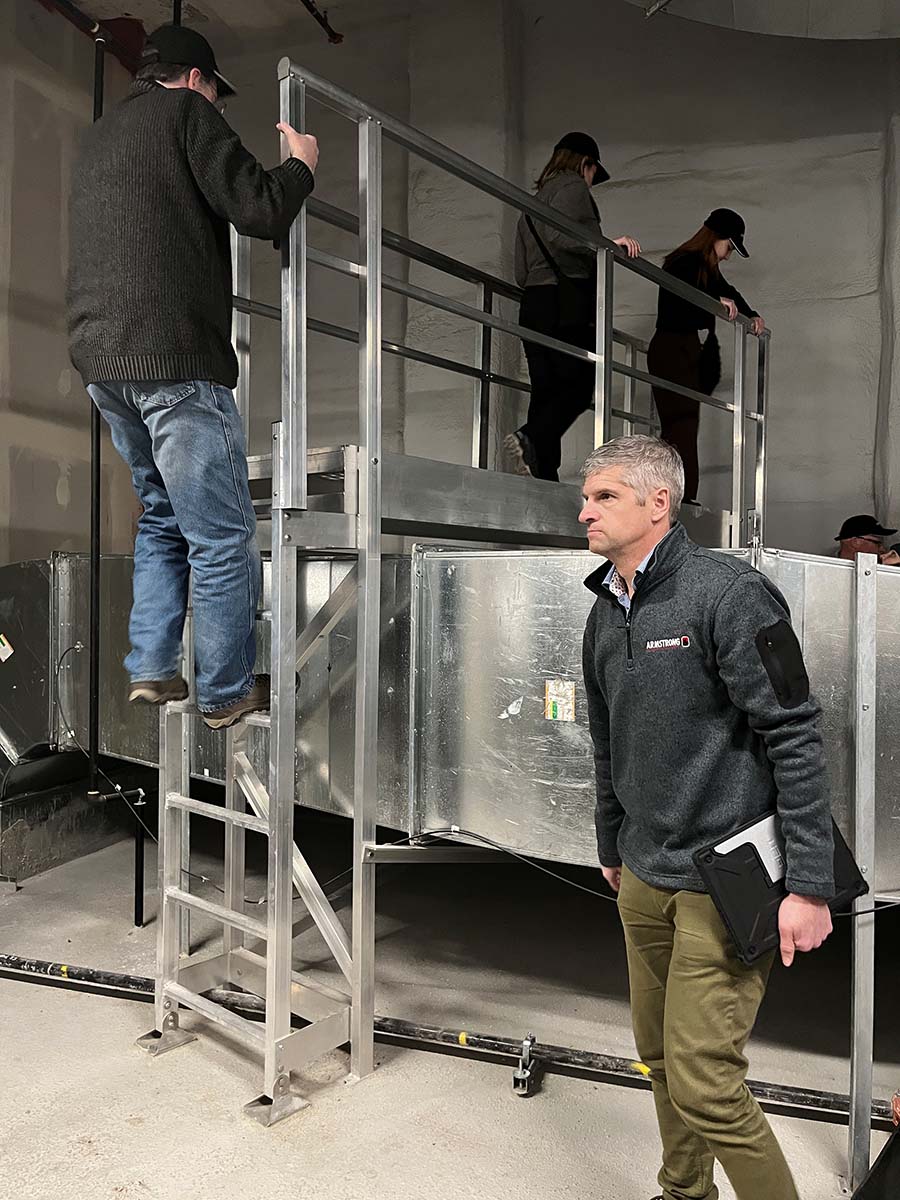
MAKE-UP: After the necessary ductwork was installed, a bridge had to be built in order to get to one set of the HVAC systems to the other. (Staff photo)
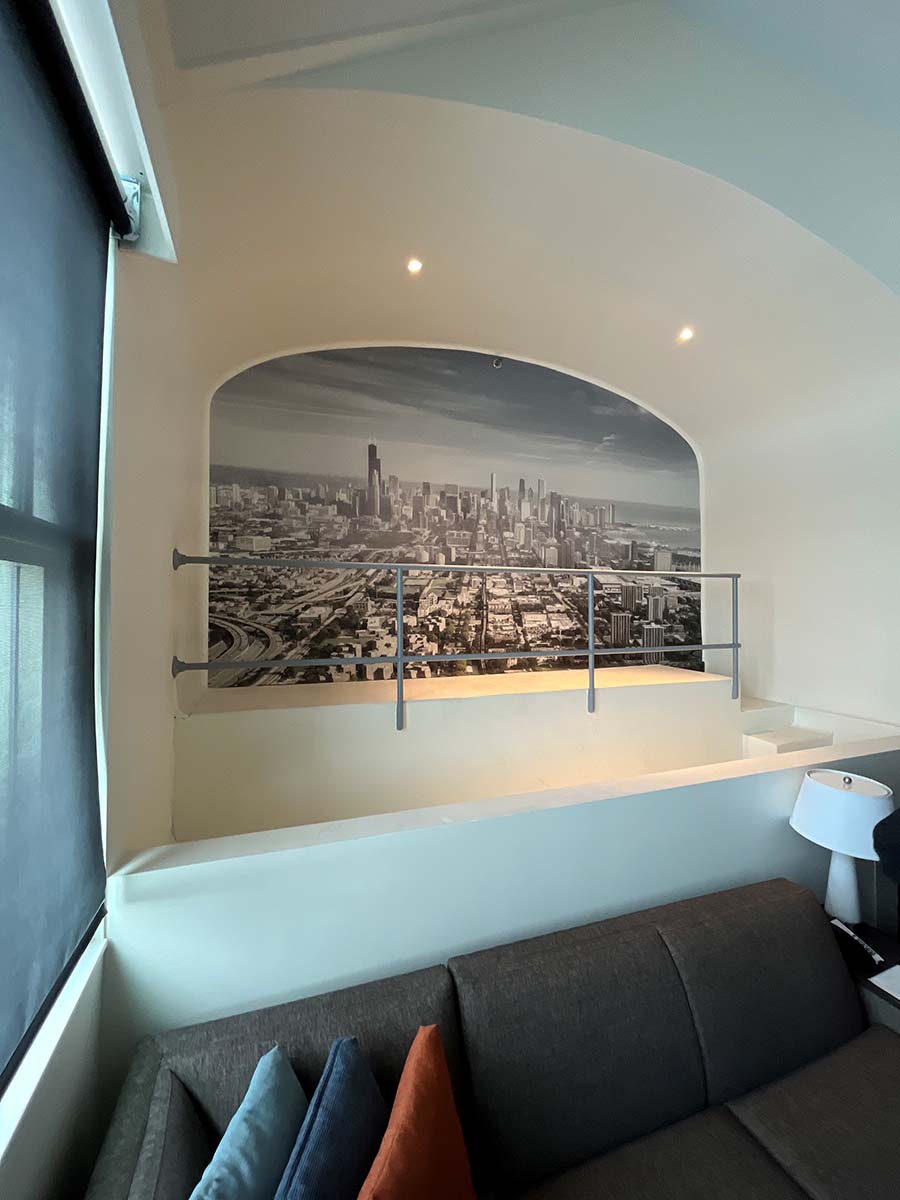
KEEPING INTACT: Only a select few suites of the newly restored Hyatt Hotel feature the original design of what was created for the observation of surgery. (Staff photo)
HEAT PUMPS FOR ALL: Each hotel room has its own heat pump, though there’s only one main room that houses the entirety of the hotels HVAC systems. (Staff photo)
“If you can, reuse and recycle, because we only have one earth … These buildings have a lot to offer if you just take your time and think through what you can do with it,” Moxon said. “The challenge with this is you’ve got to have a city, you’ve got to have a developer, and you’ve got to have an ownership that are really invested and understand it’s going to take a lot of time and money, plus some creative thinking.”
Although energy-saving results are not available for this project, replacing constant-speed pumps with intelligent variable-speed pumps can save up to 75% in pump energy.
What is best about this project, however, is the impact that reviving a building with so much historic value such as Cook County Hospital has to a city like Chicago.
“I think the best thing is you’re taking an old, dilapidated building that was just sitting there as kind of an eyesore to the local, and you really revitalize it,” Moxon said. “This project just reminds us that you don’t need to tear down some of these old buildings; you can fix them. Some of the old buildings are neater than even the best new buildings, because when you walk through them and see the work that was done by hand and details in the ornate designs … The history there … you can’t build a new building and say it’s got a lot of history.”
Whether you require installation, repair, or maintenance, our technicians will assist you with top-quality service at any time of the day or night. Take comfort in knowing your indoor air quality is the best it can be with MOE heating & cooling services Ontario's solution for heating, air conditioning, and ventilation that’s cooler than the rest.
Contact us to schedule a visit. Our qualified team of technicians, are always ready to help you and guide you for heating and cooling issues. Weather you want to replace an old furnace or install a brand new air conditioner, we are here to help you. Our main office is at Kitchener but we can service most of Ontario's cities
Source link



Add Comment